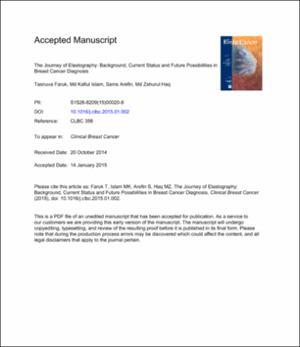| dc.description.abstract | Elastography is a promising way to assess tissue differences regarding stiffness or elasticity for what was historically assessed manually by palpation. Combined with conventional imaging modalities (eg, ultrasonography [US]), elastography can potentially evaluate the stiffness of a breast lesion and consequently help to detect malignant breast tumor from benign ones. Recent studies show that ultrasonographic elastography (USE) provides higher image quality compared with conventional B-mode US or mammography during breast cancer diagnosis, which eventually helps to reduce false-positive results (ie, increased specificity) and therefore is useful in avoiding breast biopsy. This article reviews the basics of elastography technique, classifications, diagnosis results obtained from clinical studies to date for differentiating malignant breast tumors from benign lesions, and its future possibilities. In addition, this article generalizes different elastography methods, modes, and associated imaging modalities in a simpler way and attempts to identify misconceptions and confusion related to existing elastography techniques. It also makes an effort to identify the gaps of information that need to be filled so that interested researchers can get an overall idea of elastography-based methods in a convenient way to carry out their research on breast elastography for prospective future applications, e.g. breast cancer diagnosis or even in intraoperative breast tumor localization. | en_US |
